The Centre for the Less Good Idea
William Kentridge, Bronwyn Lace, Neo Muyanga
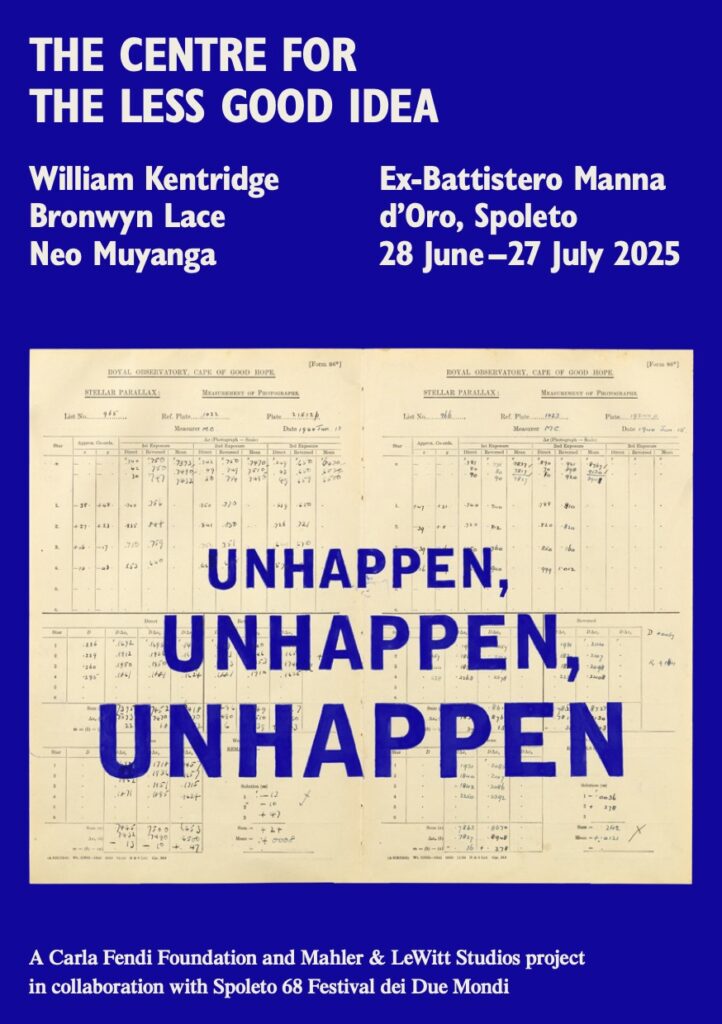
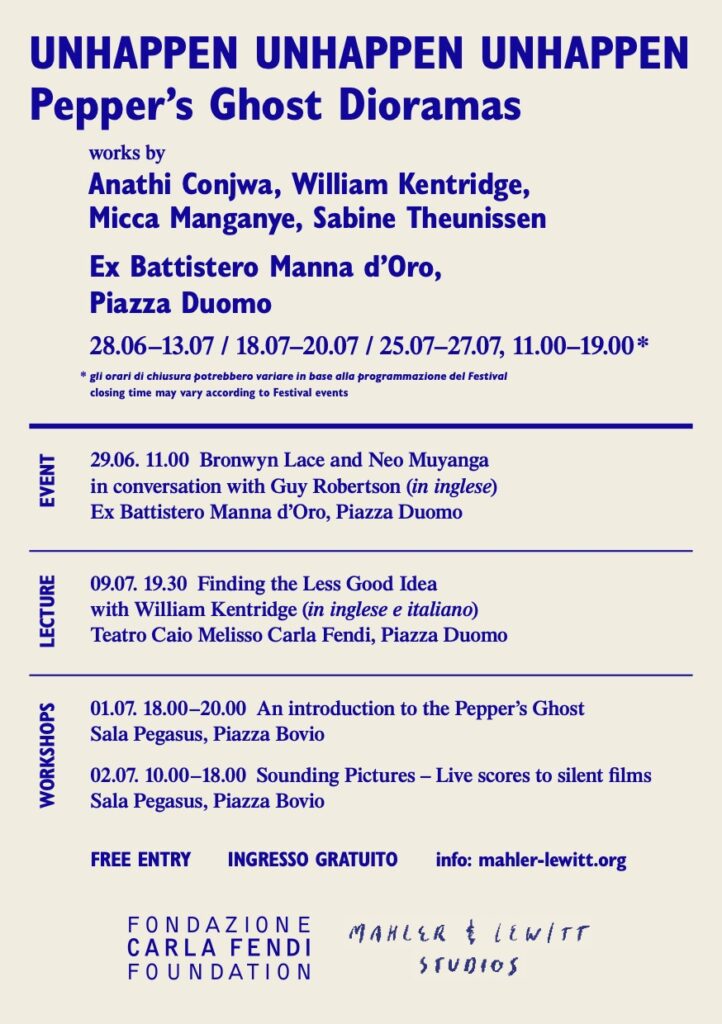
A Carla Fendi Foundation and Mahler & LeWitt Studios project in partnership with the Spoleto Festival dei Due Mondi
Founded in 2016 by William Kentridge and Bronwyn Lace, The Centre for the Less Good Idea in Johannesburg, South Africa, creates and supports experimental, collaborative and cross-disciplinary arts projects. It is a space for alternative-form work which doesn’t have a natural home in a theatre or gallery, a space to follow impulses, connections and revelations. The Mahler & LeWitt Studios has a corresponding approach to its program and it is this shared commitment which led us to develop a workshop residency and exhibition program.
The exhibition Unhappen Unhappen Unhappen – Pepper’s Ghost Dioramas at the Ex-Battistero Manna d’Oro premiered four Pepper’s Ghost performance dioramas developed by Anathi Conjwa, William Kentridge, Micca Manganye, and Sabine Theunissen. Pepper’s Ghost is a Victorian theatrical illusion technique which has become one of The Centre’s signature performance tools for investigating the way memory and history are transformed and distorted over time. (Click here for Kentridge’s brief video introduction to Pepper’s Ghost). The dioramas combine the Pepper’s Ghost technique with table-top theatre and puppetry, creating a layered and perpetual performance space in which long dormant archives can be re-activated and contested histories – relating to apartheid and colonialism, for example – are retold.
The Centre shared their philosophy and methods in a series of workshops and events, including a practical introduction to Pepper’s Ghost techniques, a live-composition workshop with silent film archives, and a performance lecture by William Kentridge.
The Centre for the Less Good Idea’s residency at the Mahler & LeWitt Studios, curated by Guy Robertson (Curator and Co-Director, Mahler & LeWitt Studios) and Bronwyn Lace, was produced by Carla Fendi Foundation and was part of a network of related events at the Spoleto Festival 68, including performances of Kentridge’s The Great Yes, The Great No which was incubated at The Centre. Kentridge also had a solo exhibition at Palazzo Collicola, Spoleto’s gallery of modern art.
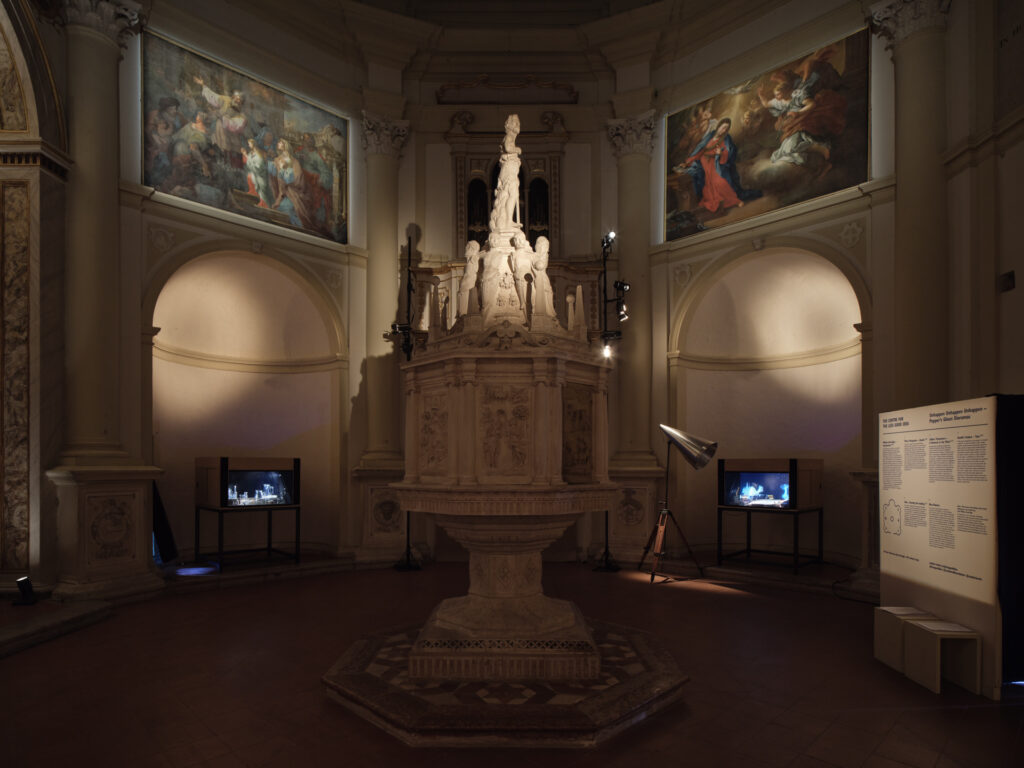
Installation view, Unhappen Unhappen Unhappen – Pepper’s Ghost Dioramas, Ex-Battistero Manna d'Oro, Spoleto
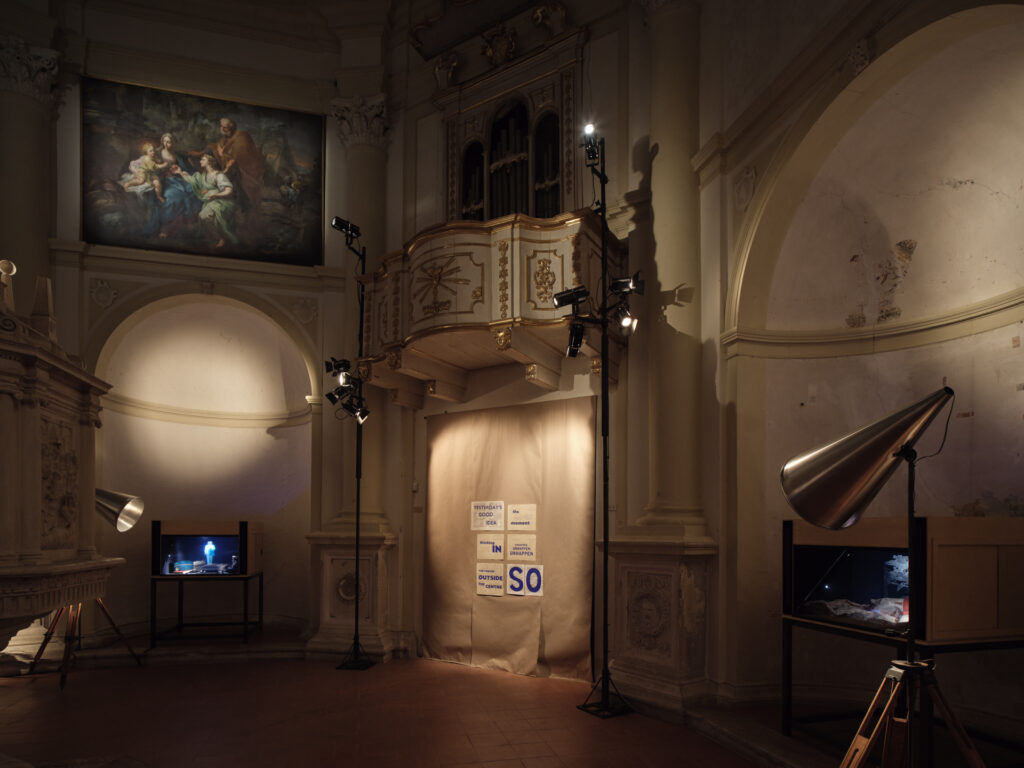
Installation view, Unhappen Unhappen Unhappen – Pepper’s Ghost Dioramas, Ex-Battistero Manna d'Oro, Spoleto
Unhappen Unhappen Unhappen – Pepper’s Ghost Dioramas
Ex-Battistero della Manna d’Oro, Pizza del Duomo
The exhibition ‘Unhappen Unhappen Unhappen – Pepper’s Ghost Dioramas’, curated by Bronwyn Lace and Guy Robertson, premieres four Pepper’s Ghost performance dioramas developed by artists working with The Centre: Anathi Conjwa, William Kentridge, Micca Manganye, and Sabine Theunissen.
Pepper’s Ghost is a Victorian theatrical illusion technique which has become one of The Centre’s signature performance tools. It uses a half-silvered mirror and dynamic lighting to project images into an indeterminate ‘spectral’ space. With the introduction of video compositing and live projection, multi-layered illusory performative and narrative approaches become possible. Experiments with the technique are able to surface ideas around the gaze and ways of seeing, excavate and interrogate heavy histories, and activate archives. The Pepper’s Ghost performance dioramas combine the Pepper’s Ghost with tabletop theatre and puppetry for the first time. As complete, miniature narrative worlds, the four performance dioramas engage visitors in a constantly shifting, perpetual performative space.
While Kentridge’s Mayakovsky experiments with language and collage-like projected animation, Manganye’s Hands looks at the use of objects and the body as puppetry inside the diorama. Conjwa’s Tata is a deeply personal work and one that uses the Pepper’s Ghost as a tool for giving new life to memory. Finally, Theunissen’s work, made specifically for the Pepper’s Ghost diorama format, merges shadow, music, and animation to put forward a series of compelling performative vignettes.
The word ‘unhappen’ describes the process of reversing past trauma. Its nonsense, however, points to the impossibility of doing so. In the context of The Centre’s work, this trauma refers to histories of apartheid and colonisation, but also extends to difficult personal experiences. The repetition of ‘unhappen’ is conflicting: it both reinforces the memory, whilst acting like a mantra, or a prayer, which attempts a reconciliation with the past. The Pepper’s Ghost technique allows artists to lean into the past, question memory and create new stories.
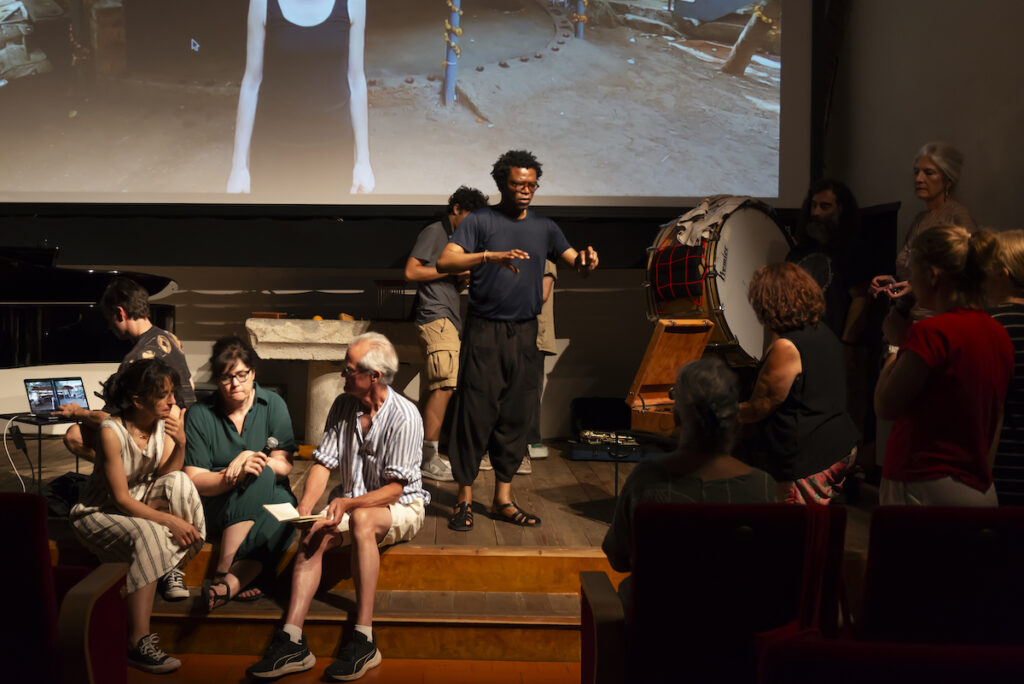
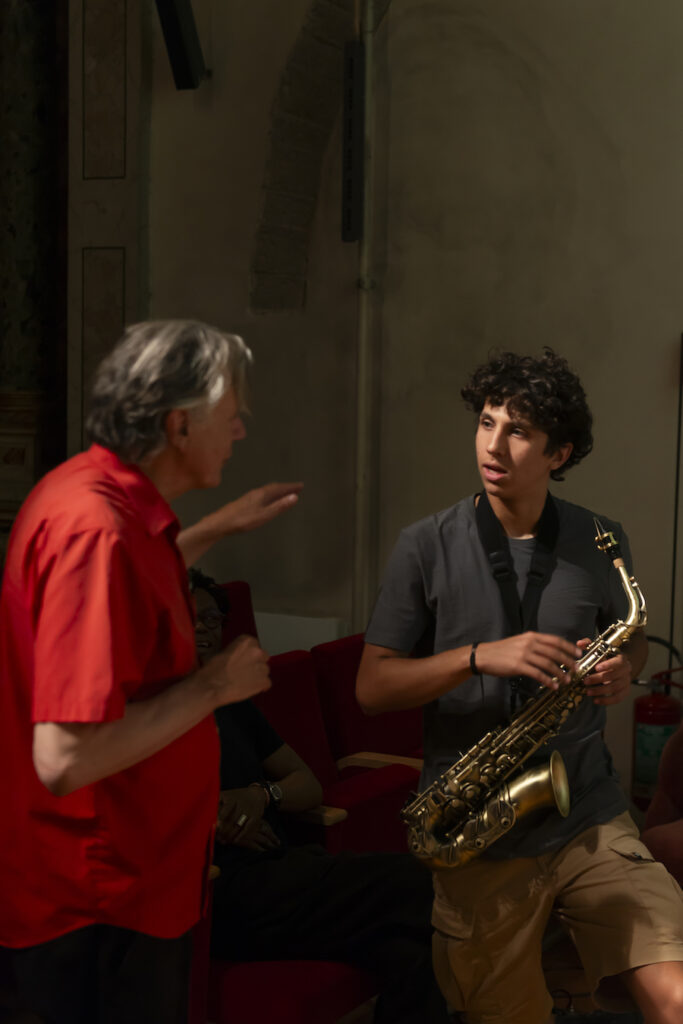
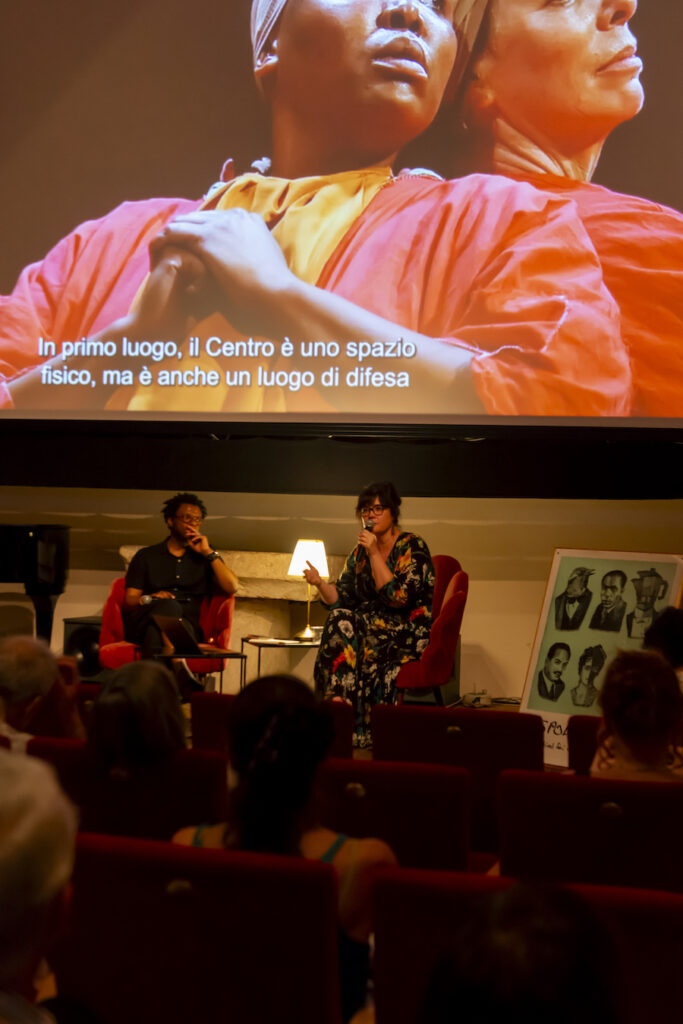
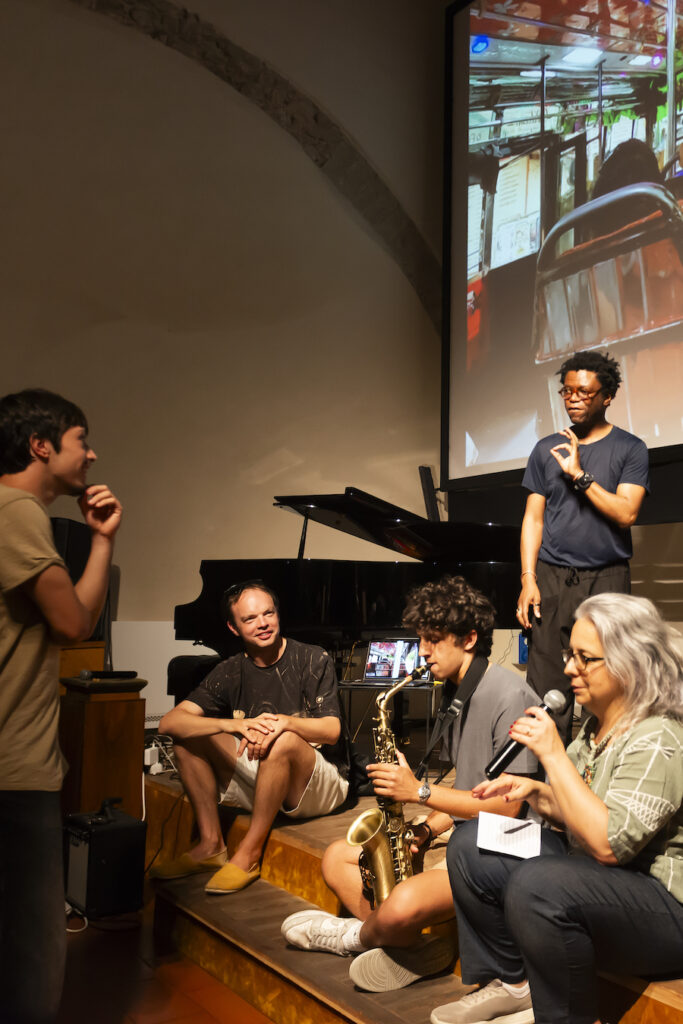
Workshops
1. An introduction to the Pepper’s Ghost
“Activated through The Centre’s process of collaborative making, the Pepper’s Ghost becomes a device that allows one to lean into, and commune with, other worlds.”
“How do we begin to look at an image collectively and collaboratively? What are the ways in which a visual archive – entrenched in the heavy histories of colonialism and rendered silent through an extractive approach to photography – can begin to speak?”
The Pepper’s Ghost has become a mechanism that holds some of The Centre’s key creative methodologies and practices – that of collective making, free-spirited experimentation, improvisation, and constant collaboration. As both a performance technique and a device for workshopping, the Pepper’s Ghost allows for uniquely generative explorations, particularly when engaging archival footage and imagery. In this way, the Pepper’s Ghost allows one to enter the image, to enter history, and situate oneself in the context of the image.
This workshop drew on The Centre’s rich archive of filmed evidence to explore the opportunities of the Pepper’s Ghost technology both in theory and practice.
2. Sounding Pictures – live scores to silent films
What happens when we look at a silent film collectively and collaboratively, responding with live, improvisational sound, performance and text, and how does this influence the narrative of the film? With a central investigation into a dramaturgy of sound, Sounding Pictures takes a series of contemporary, short silent films as the provocation for musicians who, in many instances, will be encountering them for the first time, in front of a live audience. This is a process that requires a deep listening on the part of the artists.
“Artists have to be listening deeply and responsively to what the visuals are suggesting as a narrative. They have to be creative, and collaborative, and they have to, in a sense, work telepathically with one another to create a live score,” says The Centre’s Impresario, Neo Muyanga.
In watching a specific film with two or three different scores, and subsequently with two or three different narratives or interpretations, the hope is that there is a difference in the narrative of the film, and a discovery made in the gap between intention and interpretation.”
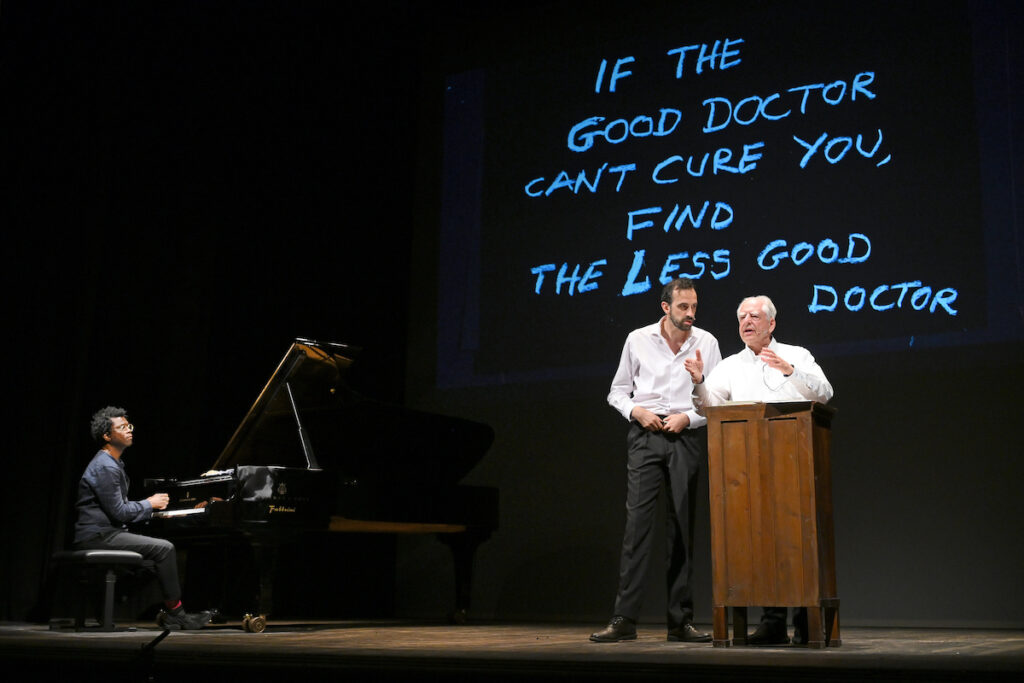
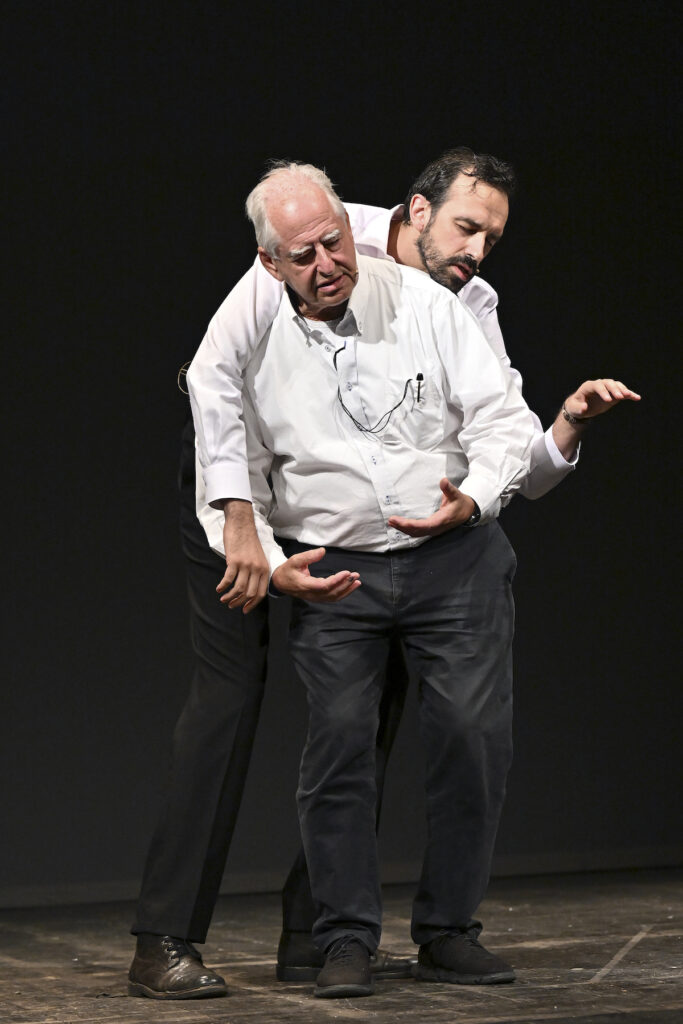
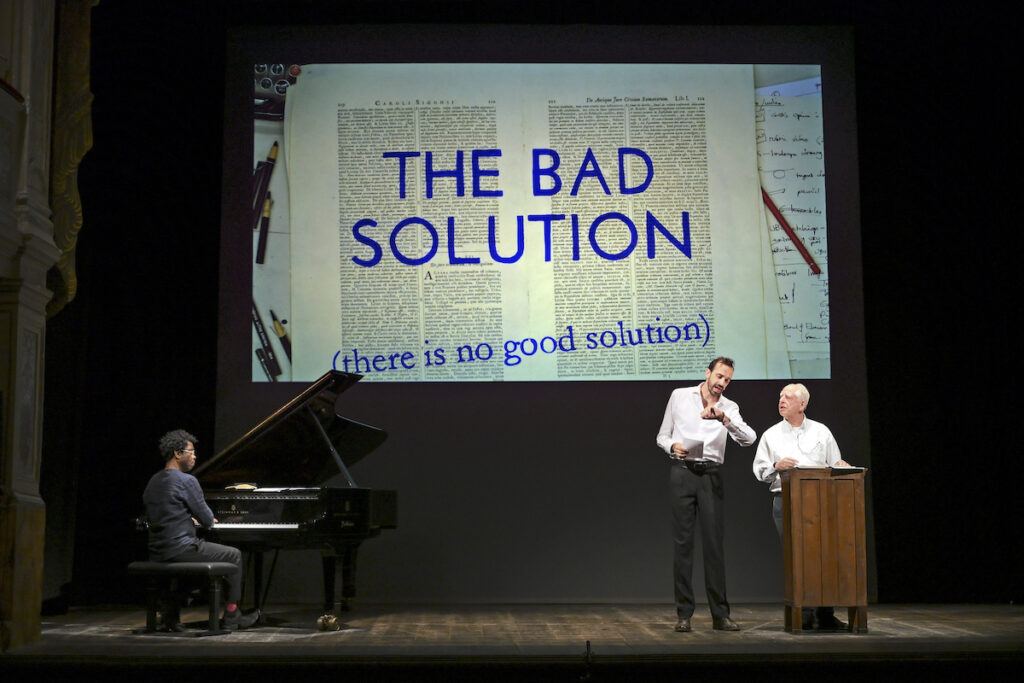
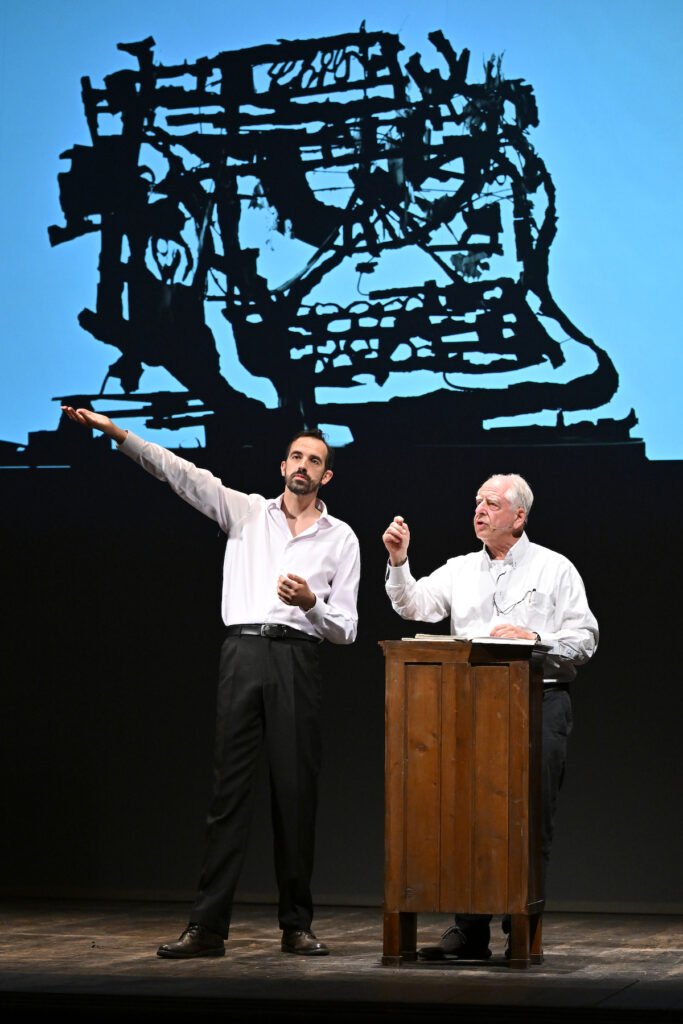
Events
Bronwyn Lace and Neo Muyanga: in conversation with Guy Robertson 29.06, 11.00–12.00, Ex-Battistero Manna d’Oro, Piazza del Duomo, Spoleto (free entry) In conversation with Guy Robertson, curator and director of the Mahler & LeWitt Studios, Bronwyn Lace and Neo Muyanga discuss the philosophy and strategies of The Centre for the Less Good Idea.
Finding the Less Good Idea: a lecture with William Kentridge 09.07, 19.30–20.30, Teatro Caio Melisso Spazio Carla Fendi, Piazza del Duomo, Spoleto (free entry – limited places) In ‘Finding the Less Good Idea’, Kentridge discusses his artistic practice and the philosophies behind the pursuit of the ‘less good idea’. Accompanying Kentridge’s lecture is Italian actor Andrea Fabi, who will be providing a live translation of the lecture into Italian, and The Centre’s Impresario, Neo Muyanga, who will be providing improvisational interjections on piano.
BIOGRAPHIES
Anathi ‘Ithana’ Conjwa is a singer-songwriter, theatre-maker and mental health advocate. Conjwa is the co-founder of the theatre company Intsusa, which has gone onto write and perform the international award-winning theatre piece ‘A Place of Knowing’. A frequent collaborator of both The Centre for the Less Good Idea and William Kentridge, Conjwa has worked with various artists in numerous international performances between Paris, the United Kindom and the United States of America. As a musician, Conjwa is well-known as ‘Ithana’. Conjwa merges her skills as a musician and a theatre maker to produce rhythmic and compelling musical performances for staged theatre works.
William Kentridge is a draughtsman, performer, filmmaker, and is the founder of The Centre for the Less Good Idea. Born in Johannesburg, South Africa, Kentridge is internationally acclaimed for his drawings, films, theatre, and opera productions. Embracing collaboration and cross-pollination of various media and genres, including performance, film, literature, and more, his work frequently responds to the legacies of colonialism and apartheid, within the context of South Africa’s socio-political landscape. Erasure, play, uncertainty, and a process-led methodology are also central to his practice. A background in theatre, as well as his early experimentations with stop-motion animation continue to inform and characterise much of the work he produces today, be it for the stage, the gallery, in the studio or the lecture hall.
Bronwyn Lace is a visual artist who has collaborated with William Kentridge on the founding and establishment of The Centre for the Less Good Idea. For Botswana-born Lace, who currently works between Austria and South Africa, her artistic practice is concerned with the relationship between art and other fields such as physics, literature, philosophy, museum practice, education, and more. Site-specificity, responsiveness, and performativity are also central to her practice, and have informed a great deal of her early work. Similarly, a balance between an isolated, introspective studio process and a collaborative, communal process sees Lace embracing incidental discoveries underpinned by an informed pursuit of new ideas. At present, Lace’s position between South Africa and Austria also sees her working to establish relationships between The Centre and other collaborative, experimental arts spaces and institutions across the globe.
Katlego ‘Kaygee’ Letsholonyane is an award-winning actor and writer as well as a celebrated Market Theatre Laboratory alumnus. In 2019 he began working collaboratively with William Kentridge and The Centre for the Less Good Idea, participating in a number of performances, including Kentridge’s adaptation of the Russian playwright Vladimir Mayakovsky’s self-titled verse drama, ‘Mayakovsky: A Tragedy’ for the Pepper’s Ghost programme. He has since gone on to be a regular collaborator with The Centre.
Micca Manganye is a Johannesburg-based musician and performer specialising in percussion and live performance. Manganye is deeply inspired by the inherent musicality of the body, the world and one’s own community. His journey into performance began in 2002 with the Township Mirror Theatre Group through which he participated in a number of performances and came to work with acclaimed performers, musicians, composers and theatre makers. Manganye began working collaboratively with William Kentridge and The Centre for the Less Good Idea in 2019. It was here that he conceptualised and performed in his first solo work ‘Untshini Wena’. He has since become a frequent collaborator of The Centre.
Neo Muyanga is a composer and installation artist, and the Centre’s Impresario for the Less Good Idea. His work traverses new opera, improv and African idiomatic song. At The Centre, Muyanga works to develop and implement a unique performative program. Together with The Centre team, Muyanga devises new incubation and development strategies, curates unique programming, and draws new artists and thinkers towards The Centre.
Sabine Theunissen studied architecture in Brussels. After one year at the technical office of La Scala of Milan, she joined the Royal Theater of La Monnaie (Brussels) where she worked 17 years in the design studio.In 2003, she met William Kentridge. Their collaboration began with Magic Flute(creation TRM 2005). Since then, she has designed sets for his opera productions as well as installations and exhibitions. Based in Brussels, she is simultaneously working with other directors and choreographers. She is frequently invited for lecturing in art and architecture schools.
Carla Fendi Foundation The Carla Fendi Foundation promotes and creates artistic events, restorations, scientific and social projects. Since forming in 2007, the Foundation has collaborated with Spoleto Festival dei Due Mondi becoming its Main Partner in 2012. Among its projects in Spoleto, the Foundation organises the annual Premio Carla Fendi STEAM, which was awarded to Carol LeWitt and Marina Mahler in 2021 for their services to culture in Spoleto. The funds from the prize are supporting a series of residencies and artistic projects at the Mahler & LeWitt Studios. fondazionecarlafendi.it
The Mahler & LeWitt Studios offers a program of residencies and special projects based around the former studios of Anna Mahler and Sol LeWitt in Spoleto, Italy. The Torre Bonomo, a medieval tower once used as a residency and exhibition space by the gallerist Marilena Bonomo, is also central to the programme. The program is curated by Guy Robertson (biography). mahler-lewitt.org


